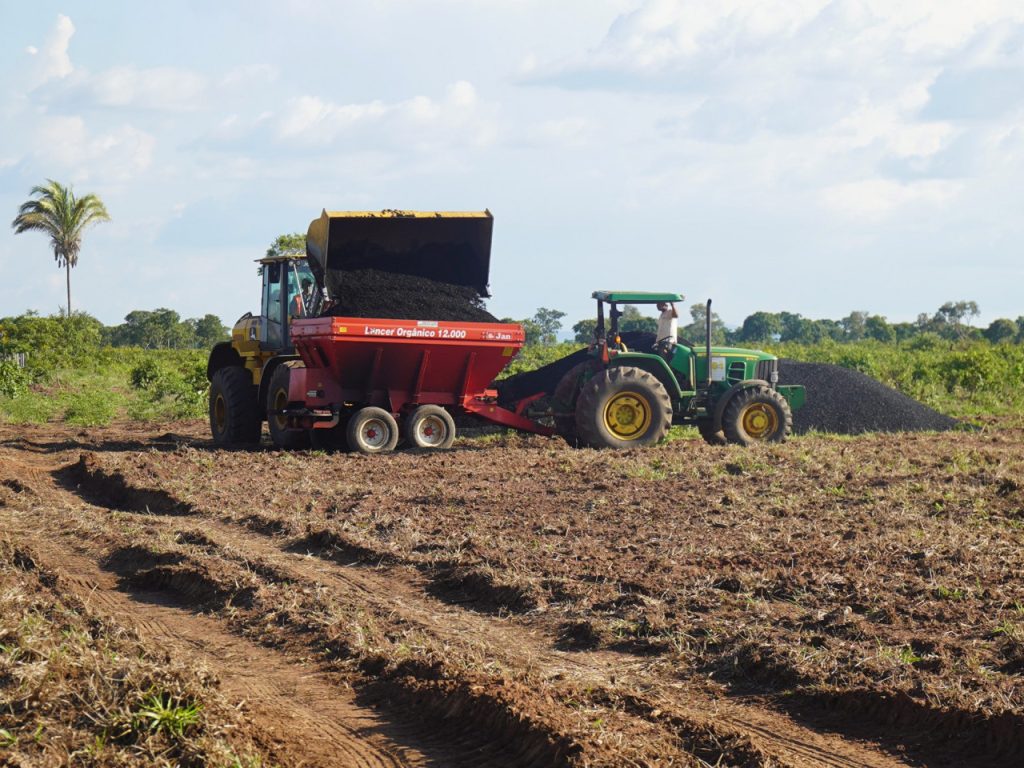By Pai Pei-hwa – Special to the Kaohsiung Times
Image and text originally published in ESG Business Today, republished with permission.
TAIWAN — At COP30, held Nov. 10–21 in Brazil, a once-niche climate tool officially stepped into the global spotlight. For the first time, carbon dioxide removal (CDR) is being formally incorporated into global climate governance — a sign that cutting emissions alone is no longer enough to meet national net-zero targets.
Among emerging CDR technologies, biochar has unexpectedly become a headline topic. And for good reason: it offers a rare combination of scientific credibility, scalability, and economic viability.
Why Biochar Surged at COP30
Brazil — an agricultural and forestry powerhouse — sees biochar as both a climate and rural-development strategy. A 2024 report by Brazil’s state energy planning agency EPE highlighted its potential to:
- Improve degraded soils
- Increase crop resilience
- Reduce open-air burning of agricultural waste
- Generate internationally tradable, high-quality carbon credits
But biochar’s rise is also driven by structural shifts in global carbon markets. Companies across North America, Europe, and Asia — from Microsoft and Google to JPMorgan and HSBC — now purchase long-term, verifiable CDR to meet their net-zero commitments.
The message from the private sector is increasingly clear: emissions cuts are not enough; permanent carbon removal is now essential.
Biochar stands out because it offers:
- Mature and proven technology
- Stable production costs
- Ability to scale quickly
- Strong environmental co-benefits
These attributes have helped the sector gain recognition from international standards bodies, including ICVCM, Verra, and Puro.earth, all of which classify biochar as “high-integrity carbon removal.”
Circular Economy in Practice
Biochar is more than a climate technology — it is a closed-loop economic system.
In a linear economy, agricultural and forestry waste is typically burned or landfilled, generating air pollution and greenhouse gas emissions. Biochar flips that model:
- Biomass (rice husks, wood chips, fruit and vegetable residues) is converted through low-oxygen pyrolysis into a carbon-rich solid.
- Byproducts such as wood vinegar and pyrolysis gases can be reused in agriculture or energy systems.
- When applied to soil, biochar locks carbon away for 100–1,000 years, improves water retention, strengthens microbial activity, and reduces fertilizer demand.
- Verified carbon sequestration becomes exportable CDR credits, generating new income streams for farmers, cooperatives, and rural communities.
The EU’s BS 8001 circular economy standard calls this effect a “sustainability-driven closed loop.” Biochar is one of the few climate tools that fit the definition in full.
Taiwan’s Strategic Position: High-Tech CDR for a High-Tech Economy
Taiwan is not a major agricultural nation, but it possesses something equally valuable: world-class engineering, sensing systems, precision manufacturing, and materials science.
This gives Taiwan a natural role in the global CDR supply chain:
the quality, verification, and technology end.
One of the leading examples is TCHAR (光泰環能) in central Taiwan — a firm converting local biomass into biochar while also supplying material for building products, sports equipment, and industrial R&D.
TCHAR was the first Taiwanese producer to receive European Biochar Certificate (EBC) recognition, with an ambitious target of removing 1 million tons of CO₂ by 2032 and entering international carbon markets at scale.
With Taiwan’s industries facing SBTi requirements, CBAM compliance, and supply-chain decarbonization pressures, high-quality domestic CDR credits are no longer optional — they are becoming essential.
Southeast Asia: The World’s Biochar Factory
If Taiwan is positioned as the quality-assurance and technology hub, Southeast Asia is emerging as the mass-production base.
Countries such as Vietnam, Indonesia, and Thailand offer:
- Huge volumes of agricultural and forestry residues
- Low and stable feedstock costs
- Affordable land and factory setup expenses
- Fast-developing carbon market regulations
Major regional platforms — such as Singapore’s Climate Impact X — already serve as conduits for international buyers seeking large, predictable CDR volumes.
For multinational corporations and carbon-removal funds, Southeast Asia provides the scale; Taiwan offers verification, engineering partnerships, and high-integrity standards. The relationship is complementary, not competitive.
A New Southbound Climate Strategy
Together, Taiwan and Southeast Asia now form a de facto cross-border biochar supply chain:
Taiwan: technology export, quality control, sensors, standards, and MRV
Southeast Asia: high-volume biomass feedstock, large-scale pyrolysis plants, export capacity
This aligns naturally with Taiwan’s New Southbound Policy, shifting cooperation beyond manufacturing into climate technology, carbon-credit co-development, and sustainable agriculture.
Where This Is Headed
With biochar now recognized as a formal component of global climate action through COP30, the window is open for Asia — and especially Taiwan — to secure a leading role.
If Taiwan can:
- Expand technology partnerships
- Support Southeast Asian mass production
- Establish its own high-quality CDR project pipeline
- Continue meeting international standards
…it can position itself not just as a participant in the future carbon-removal economy, but as one of its defining leaders.
About the Author:

Pei-Hwa Pai (白佩華) has over twenty years of experience in risk management and sustainability consulting. Holding dual master’s degrees in communication from U.S. institutions, Ms. Pai also earned a Certificate in Circular Economy and Sustainability Strategies from the University of Cambridge Judge Business School, professional certificates in Strategy Analysis, Management and Leadership, and Business in Society from Harvard Business School, and an ESG Materiality Analysis Certificate from the Wharton School. She further holds certifications in TCFD, CDP, and SBTi training from Taiwan’s Industrial Technology Research Institute (ITRI), along with credentials as a lead auditor for ISO 14064, ISO 14068-1, ISO/IEC 42001, and expertise in ISO 14067 and BS 8001. Trained under the MIC Industry Analyst Program, she brings both academic rigor and industry insight to her consulting practice.
Pai has also established two scholarships dedicated to sustainability and AI, supporting academic research and encouraging young people to enter the field of sustainable development. Over the years, Ms. Pai has guided numerous companies in successfully implementing sustainability transformations. Her columns have been published across numerous media outlets, and she continues to serve as a strategic and sustainability advisor to the industry.



